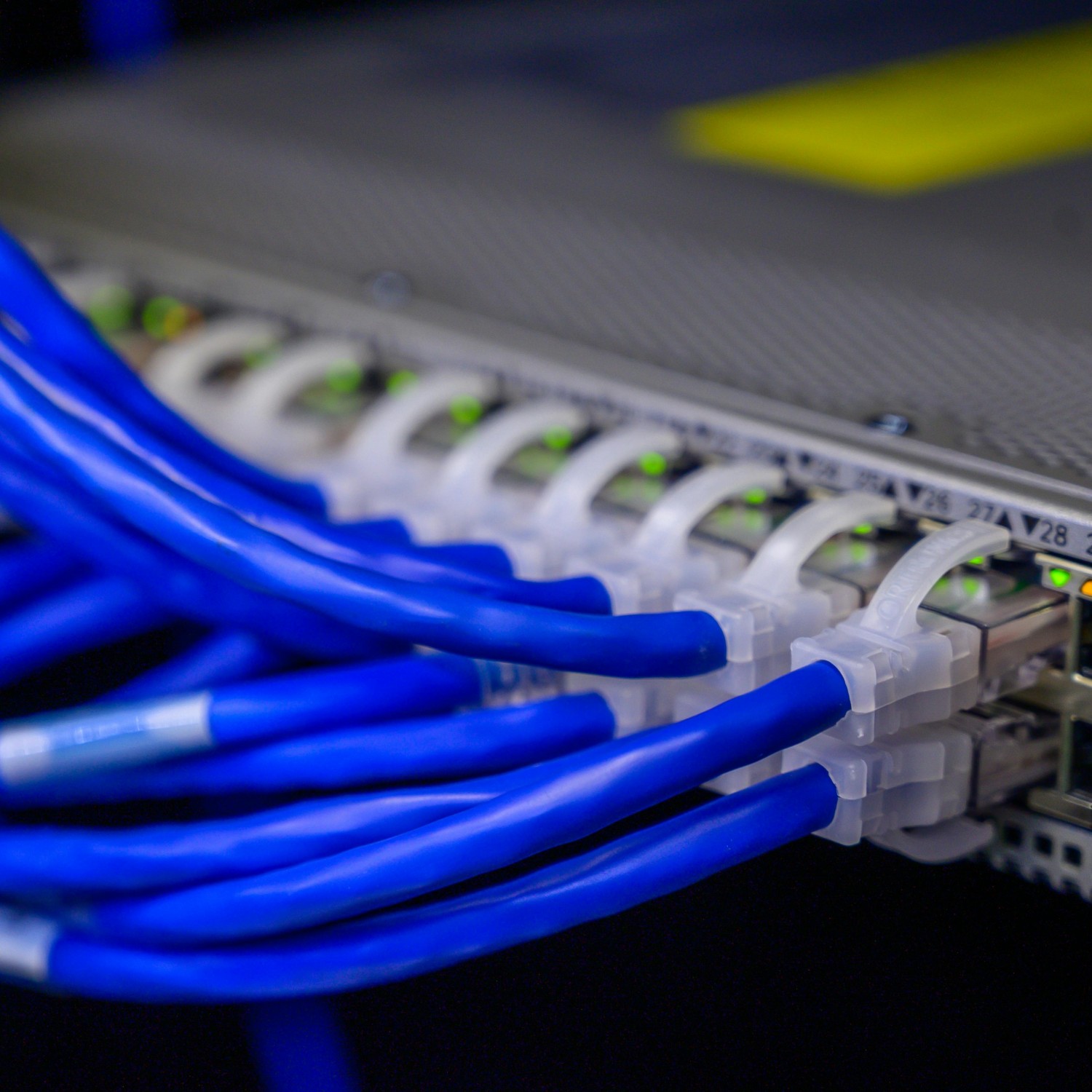In the fast-paced world of financial institutions, the benefits of deploying a 400GbE network are truly game-changing. With data transfer speeds of up to 400 gigabits per second, this high-performance Ethernet solution revolutionizes connectivity in the digital age.
A 400GbE network is like the superhighway of the internet, allowing financial institutions to transmit massive amounts of data quickly and efficiently. From routing to aggregation, this network infrastructure supports the demands of big data, AI applications, and IoT services with ease.
By harnessing the power of 400G Ethernet, financial institutions can enhance operational efficiency, scalability, and overall performance. With increased bandwidth and improved connectivity, tasks that once took hours can now be completed in minutes, boosting productivity and streamlining workflows.
Furthermore, the compact form factor of 400GbE routers and transceivers makes them ideal for data centers and enterprise environments where space is at a premium. The optical wavelength technology ensures reliable and secure data transfer, giving financial institutions peace of mind in an ever-evolving digital landscape.
Deploying a 400GbE network is a strategic investment for financial institutions looking to stay ahead of the curve in data management and processing. With unparalleled speed, reliability, and bandwidth capacity, this Ethernet solution sets the stage for a new era of technological innovation and efficiency.
What is a 400GbE Network and Why is It Important for Financial Institutions?
The demand for faster and more efficient networking solutions continues to grow. Financial institutions, in particular, rely heavily on high-speed networks to handle massive amounts of data securely and effectively. One of the latest advancements in networking technology that is gaining significant momentum is the 400GbE network.
What is a 400GbE Network?
A 400GbE network, short for 400 Gigabit Ethernet, is a next-generation networking solution that offers blazing-fast data transfer speeds of up to 400 billion bits per second. This high-speed network is designed to meet the ever-increasing bandwidth demands of industries such as finance, enterprise networks, hyperscale data centers, and more.
Why is it Important for Financial Institutions?
In the fast-paced world of finance, where milliseconds can make a significant difference, having a reliable and high-speed network infrastructure is crucial. A 400GbE network not only provides the necessary network capacity to handle the immense volumes of data generated by financial transactions but also ensures that these transactions are processed quickly and securely.
By leveraging the power of HPC (High-Performance Computing) and 400GbE technology, financial institutions can streamline their operations, improve customer experience, and stay ahead of the competition. The use of machine learning and advanced analytics also benefits from the high-speed connectivity that a 400GbE network offers.
The adoption of a 400GbE network is not only essential for financial institutions to meet their current networking needs but also to prepare for the future as data continue to grow exponentially.
Moreover, with the 400GbE standard allowing for the transmission of a 400GbE signal across a single wavelength, financial institutions can future-proof their networks and stay ahead of the curve in terms of network scalability and performance.
To support the implementation of 400GbE networks, leading service providers like Ciena offer advanced solutions such as Ciena’s Wavelogic AI and the Navigator Network Control Suite. These tools enable financial institutions to optimize their networks, enhance network performance, and manage their networking requirements efficiently.
Understanding the Basics of a 400GbE Network
In the world of networking, the term 400GbE refers to the latest standard of Ethernet connectivity that is designed to handle massive data loads at incredible speeds. With the continuous growth of digital information and the increasing demand for bandwidth, 400GbE has emerged as a crucial technology for organizations that rely on fast and reliable networks.
At its core, a 400GbE network is built on the foundation of 100GbE and the GbE cable infrastructure, leveraging technologies like CSPs and Ciena’s Navigator Network Control Suite for efficient data transmission. This next-generation network allows for data rates of up to 400Gbps, ensuring seamless connectivity and network performance.
One of the key advantages of 400GbE is its ability to future-proof networks, accommodating the rising traffic and bandwidth requirements of cloud data centers and other data-intensive environments. By combining the power of HPC and 400G technologies, organizations can not only meet the current demand for bandwidth but also prepare for future growth.
When considering the deployment of a 400GbE network, factors such as total cost of ownership, setup, and ethernet speeds need to be taken into account. The IEEE standards for 400Gb Ethernet play a vital role in ensuring interoperability and compatibility across different systems, while QSFP-DD connectors enhance data transmission efficiency.
With the increasing number of data centers worldwide and the growing density in fiber connectivity, the adoption of 400GbE is expected to become more widespread. As organizations seek to harness the combined power of HPC and 400G for their connectivity needs, the financial and operational benefits of upgrading to 400GbE cannot be overlooked.

Benefits of Implementing 400GbE in Financial Institutions
Financial institutions rely heavily on fast, reliable, and secure network infrastructure to handle massive amounts of data and ensure seamless operations. One technology that is revolutionizing the networking landscape is 400GbE (400 Gigabit Ethernet). Implementing 400GbE in financial institutions offers a wide range of benefits that can enhance operational efficiency, drive innovation, and future-proof network capabilities.
Key advantages of implementing 400GbE in financial institutions include:
- High Data Transfer Speed: With data transfer speeds of up to 400 gigabits per second, 400GbE enables financial institutions to process large volumes of data quickly and efficiently. This high-performance connectivity is essential for handling complex financial transactions and real-time data processing.
- Scalability and Network Capacity: 400GbE provides scalability to meet increasing bandwidth demands in financial institutions. It offers the capacity to support growing data traffic, ensuring that networks can handle the evolving needs of modern financial services.
- Operational Efficiency: The deployment of 400GbE technology improves operational efficiency by streamlining data routing and reducing latency. This leads to faster data processing, enhanced service delivery, and improved customer experiences.
- Future-Proof Networking Infrastructure: 400GbE is a next-generation networking technology that is designed to meet the evolving demands of financial institutions. By investing in 400GbE, financial institutions can future-proof their network infrastructure and stay ahead of technological advancements.
- Enhanced Security: The high data transfer speeds and robust connectivity offered by 400GbE contribute to enhancing network security in financial institutions. With improved encryption capabilities and secure data transfer, 400GbE helps safeguard sensitive financial information.
- Cost-Effectiveness: While the initial implementation costs of 400GbE may be higher, the technology offers a lower total cost of ownership in the long run. Its efficiency, scalability, and performance benefits contribute to cost savings and improved ROI for financial institutions.
- Support for Emerging Technologies: 400GbE is well-suited to support emerging technologies such as AI, IoT, edge computing, and big data analytics. Its high bandwidth capabilities enable financial institutions to leverage these technologies for data-driven insights and strategic decision-making.
Implementing 400GbE in financial institutions offers a transformative solution to address the evolving networking requirements of the industry. With its high-speed connectivity, scalability, security features, and cost-effectiveness, 400GbE is poised to drive innovation and operational excellence in financial institutions.
By leveraging the power of 400GbE, financial institutions can enhance their network infrastructure, meet growing bandwidth demands, and deliver high-performance connectivity to support their critical operations.
How Does a 400GbE Network Improve Network Infrastructure for Financial Institutions?
Financial institutions rely heavily on a robust network infrastructure to support their critical operations. In this digital age, speed and reliability are of utmost importance for these institutions. Transitioning to a 400GbE network can significantly enhance their network infrastructure and address their growing computing and networking requirements.
400GbE, also known as 400 Gigabit Ethernet, is the latest advancement in networking technology that offers a massive increase in bandwidth compared to its predecessors such as 10GbE and 100GbE. With four times faster data transfer rates, 400GbE is the future of networking and is designed to future proof every data center.
One of the key benefits of 400GbE is its ability to provide a higher data transfer rates for big data business. By using a single 400GbE wavelength, financial institutions can transport a vast amount of data more efficiently than ever before. This not only saves time but also enhances the overall performance of their network infrastructure.
Leading network equipment providers like WL5N Universal QSFP-DD are offering field-proven analytical tools that enable financial institutions to optimize their network performance and stay ahead in the competitive landscape.
By upgrading to 400GbE, these institutions can meet the ethernet services demands of today and tomorrow, reaffirming their commitments to diversity and innovation in the industry.
What Are the Key Considerations in Deploying a 400GbE Network in Financial Institutions?
When it comes to implementing a 400GbE network in financial institutions, there are several key considerations that need to be taken into account to ensure a smooth and efficient deployment.
Here are some important factors to keep in mind:
- Optimizing Bandwidth: 400GbE offers significantly higher data transfer speeds compared to traditional 10GbE and 100GbE networks. It can transport data across the network at a much faster rate, allowing for quicker access to critical financial information.
- Infrastructure Compatibility: Before deploying a 400GbE network, it’s essential to ensure that the existing infrastructure supports the higher bandwidth requirements. Upgrading to 400GbE may require changes to switches, routers, and other networking equipment to handle the increased data throughput.
- Data Security: In the financial sector, data security is of utmost importance. When deploying a 400GbE network, it’s crucial to implement robust security measures to protect sensitive financial data from potential cyber threats. Encrypting data transmissions and securing network endpoints are vital steps to safeguard against security breaches.
- Network Scalability: Planning for future growth is essential when deploying a 400GbE network. The network should be designed to scale easily to accommodate increasing data traffic and expanding operations. Scalability ensures that the network remains efficient and cost-effective as the institution grows.
- Technical Expertise: Deploying and managing a 400GbE network requires specialized technical expertise. Having experienced network engineers and IT professionals overseeing the deployment process is crucial to ensure the network operates effectively and efficiently.
Deploying a 400GbE network in financial institutions requires careful planning, consideration of bandwidth requirements, infrastructure compatibility, data security measures, network scalability, and access to technical expertise.
By addressing these key considerations, financial institutions can effectively leverage the benefits of a high-speed 400GbE network for improved performance and productivity.

How Does 400GbE Networking Technology Benefit High-performance Computing in Financial Institutions?
The 400GbE networking technology has emerged as a game-changer for high-performance computing. This advanced technology boasts speeds of up to 400 Gbps, significantly surpassing its predecessors like 100Gb and 10 GbE. Financial institutions rely on 400GbE to efficiently transport large volumes of data across their networks.
One key advantage of 400GbE is its ability to carry out tasks that were previously limited by lower bandwidth capacities. 400G can give financial institutions the edge they need to handle complex computations and data analytics in real-time. By leveraging 400GbE, these institutions can keep up with the demands of modern finance and stay one step ahead of the competition.
The transition to 400GbE also simplifies network infrastructure, as fewer physical connections are needed to achieve high-speed data transfer. This streamlining of operations results in cost savings and improved efficiency for financial institutions.
The adoption of 400GbE networking technology offers undeniable benefits for high-performance computing in financial institutions, setting the stage for enhanced operational capabilities and improved competitiveness in the digital age.
The 400GbE empowers financial institutions to maximize their network potential by leveraging a single 400G wavelength. This consolidated approach not only provides a data network that is faster and more reliable but also paves the way for future scalability and growth.
What Role Does 400GbE Network Play in Edge Computing and Content Delivery for Financial Institutions?
In today’s fast-paced digital landscape, the role of high-speed networking solutions is becoming increasingly crucial, especially for financial institutions where data transfer speeds and reliability are paramount. One such technology that is revolutionizing the way data is transmitted is the 400GbE network by Cisco.
- The 400GbE network plays a vital role in edge computing and content delivery for financial institutions by providing ultra-fast data transfer speeds of 400 gigabits per second (Gbps).
- This high-speed network is used to transport massive amounts of data efficiently and quickly, enabling financial institutions to process transactions and deliver content to their customers in real-time.
- Compared to older network technologies like 10 GbE and 100 GbE, the 400GbE network offers significantly faster speeds, making it ideal for handling the large volumes of data generated by financial institutions.
- By leveraging the capabilities of 400GbE, financial institutions can achieve seamless connectivity across their Ethernet networks, ensuring efficient and reliable data transmission.
- A single 400Gb wavelength can provide the necessary bandwidth to support the demanding data requirements of financial institutions.
The 400GbE network is a game-changer in the world of edge computing and content delivery for financial institutions, offering unparalleled speed and performance. By embracing this cutting-edge technology, financial institutions can stay ahead of the competition and meet the ever-growing demands of the digital age.



